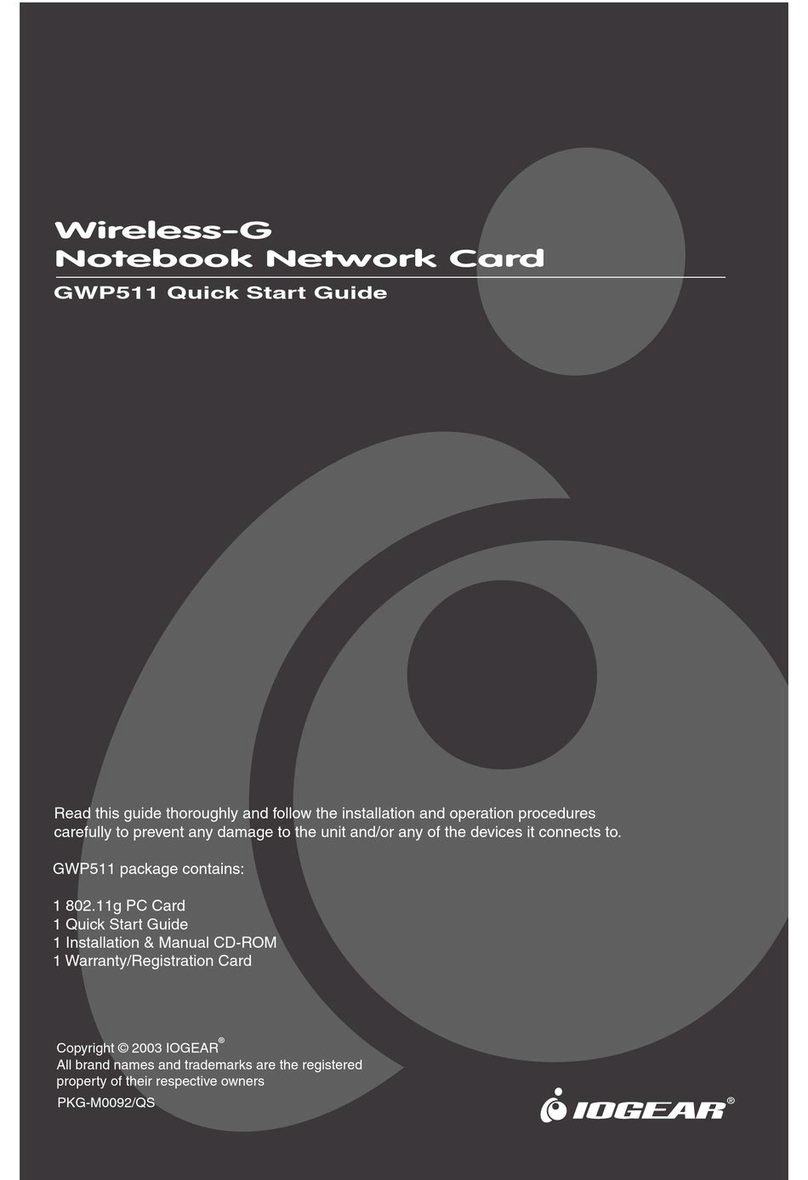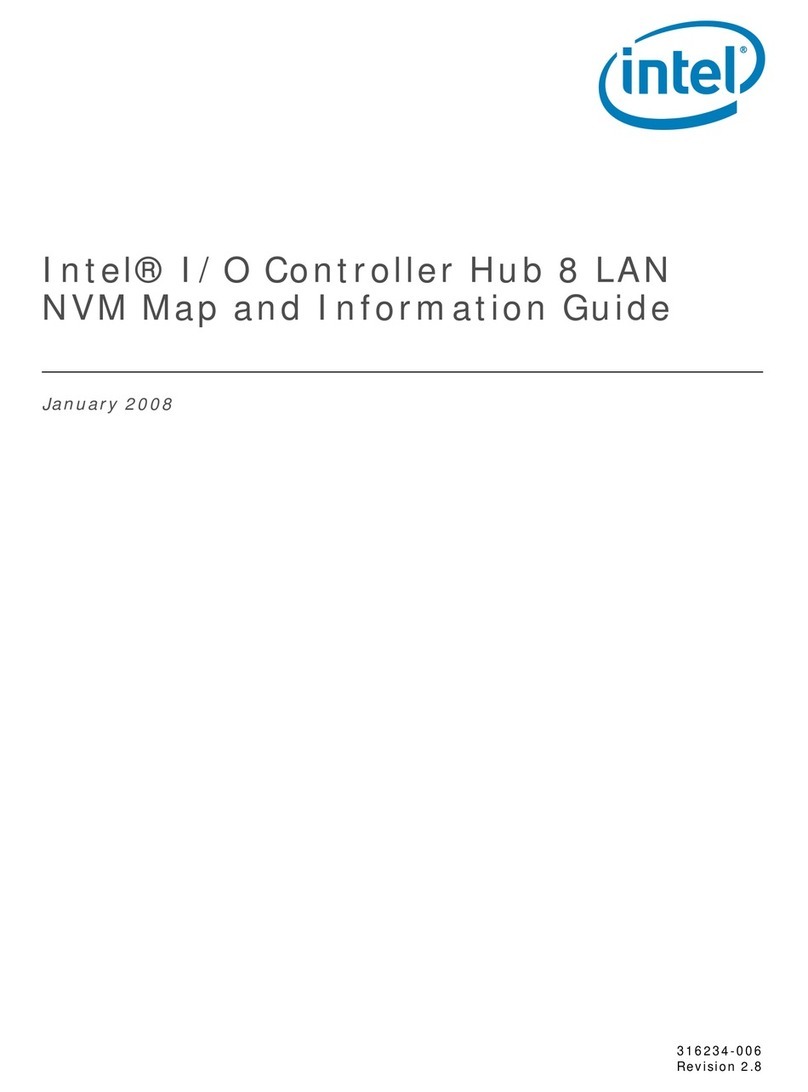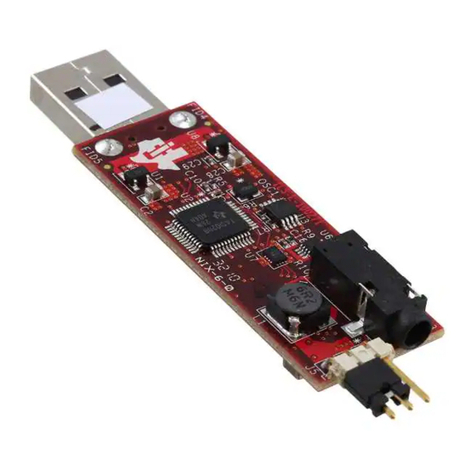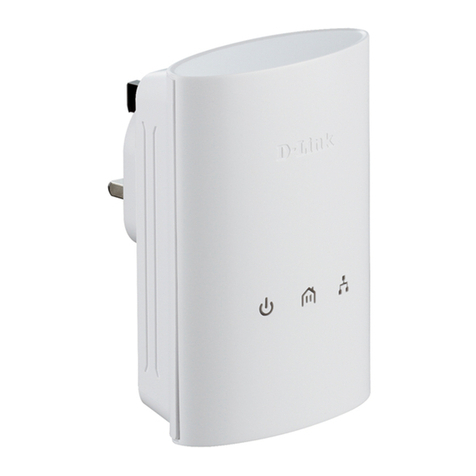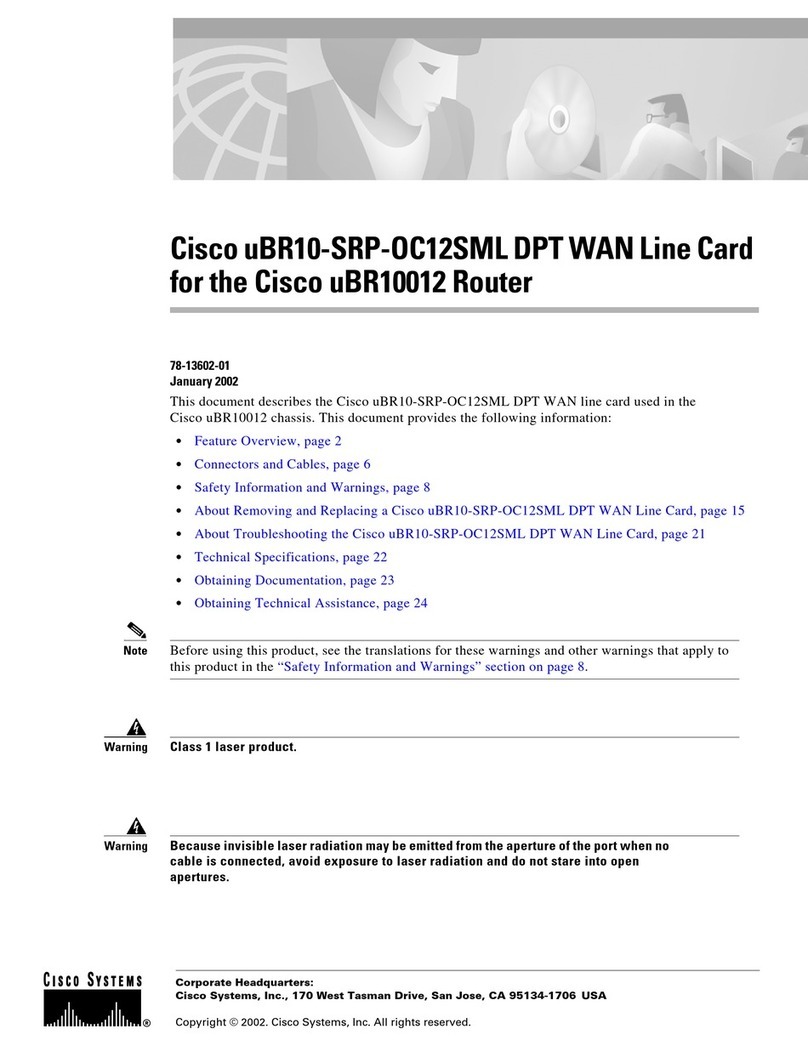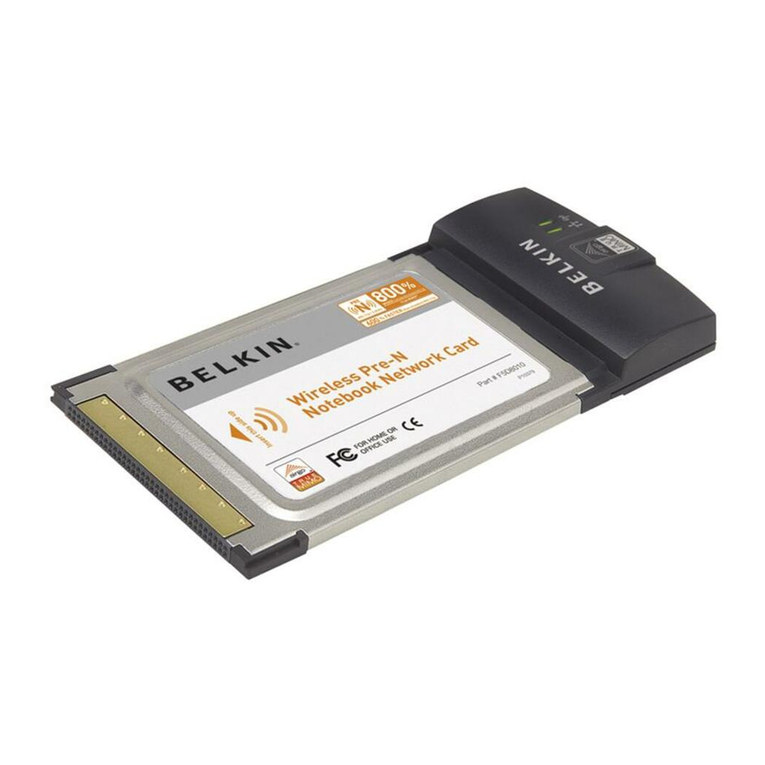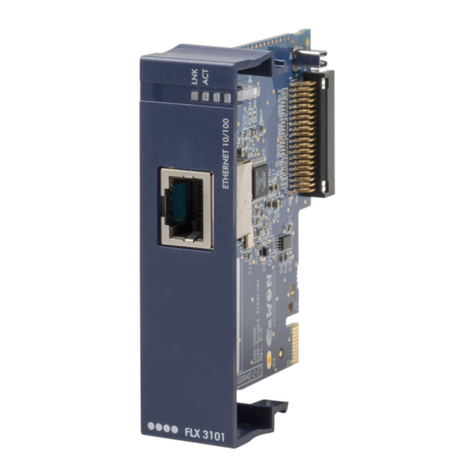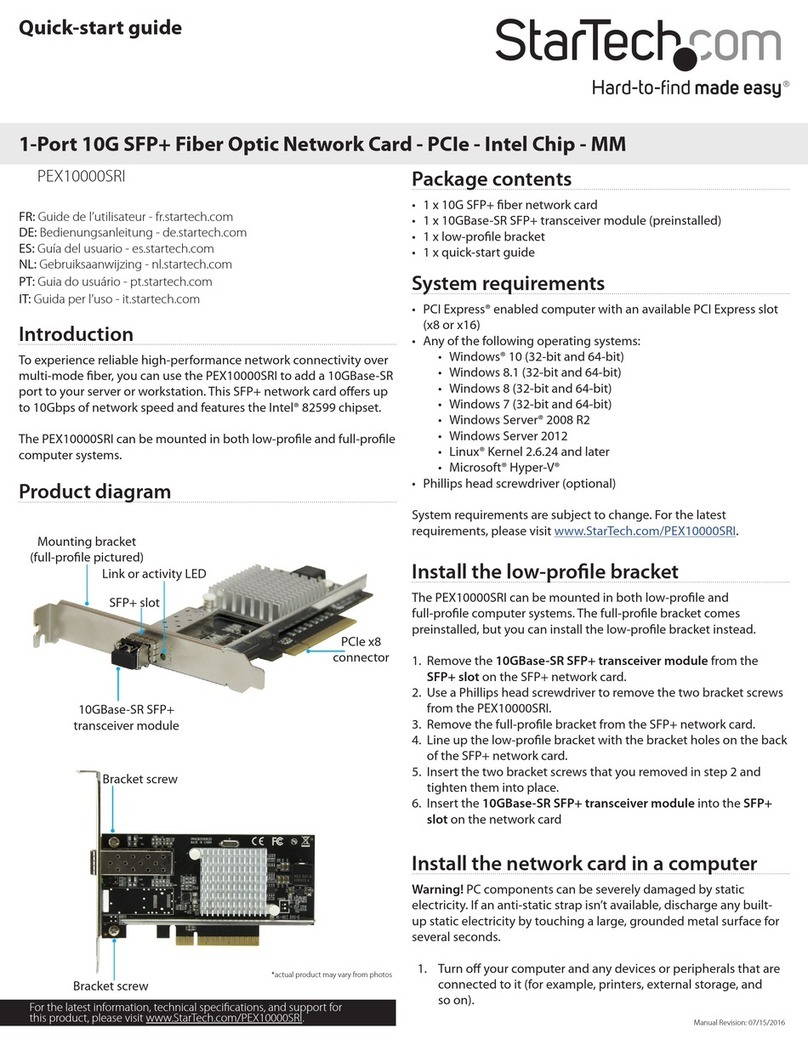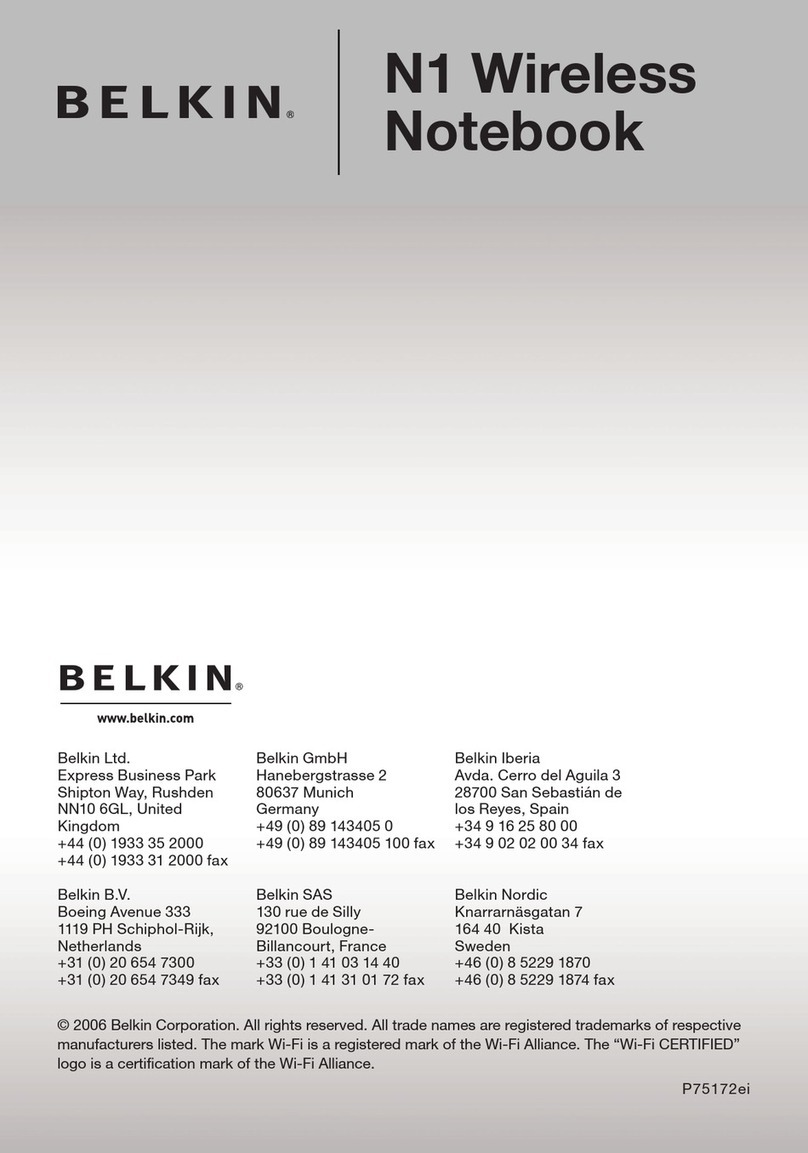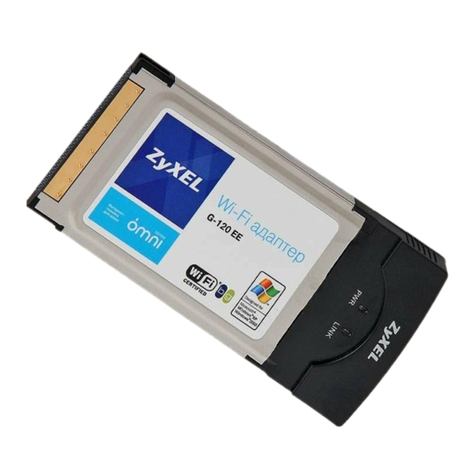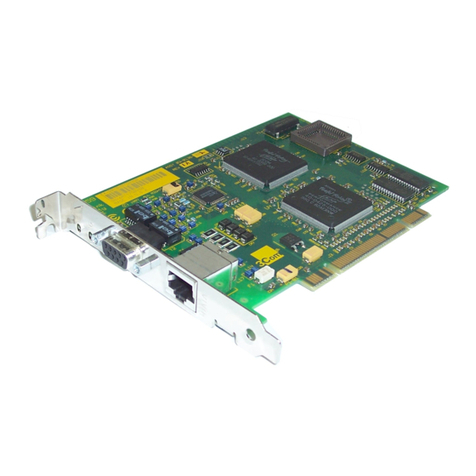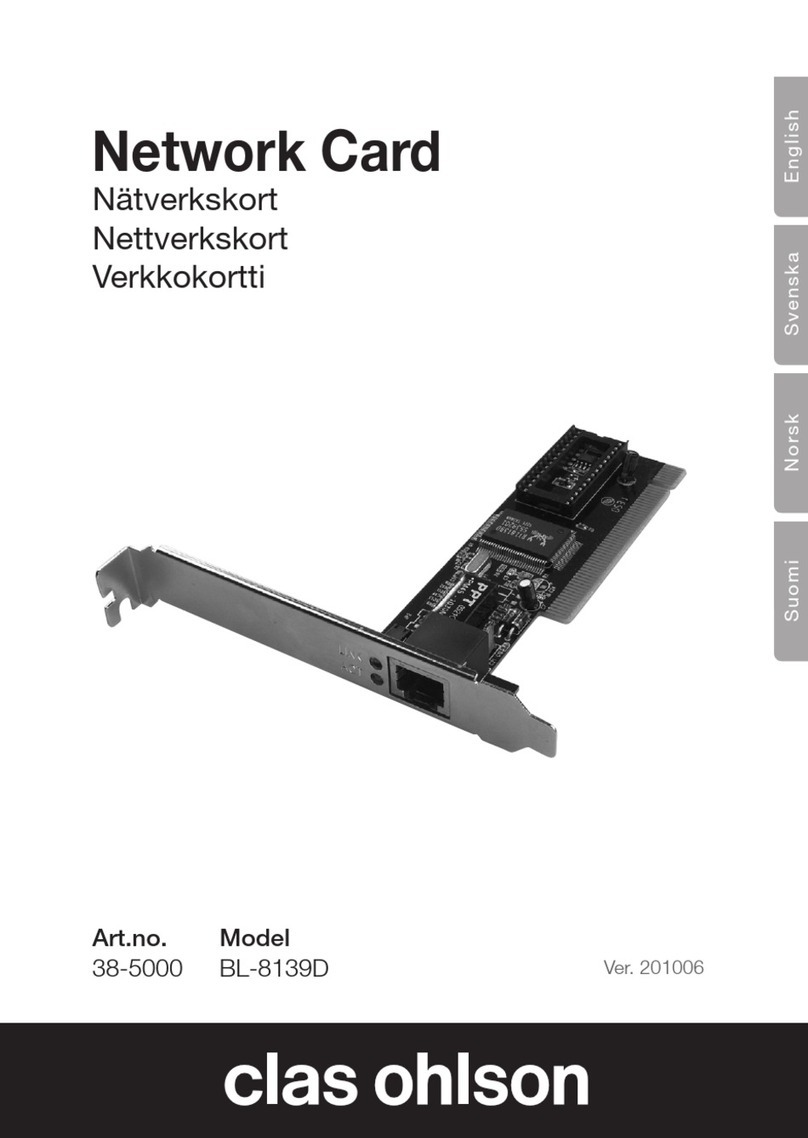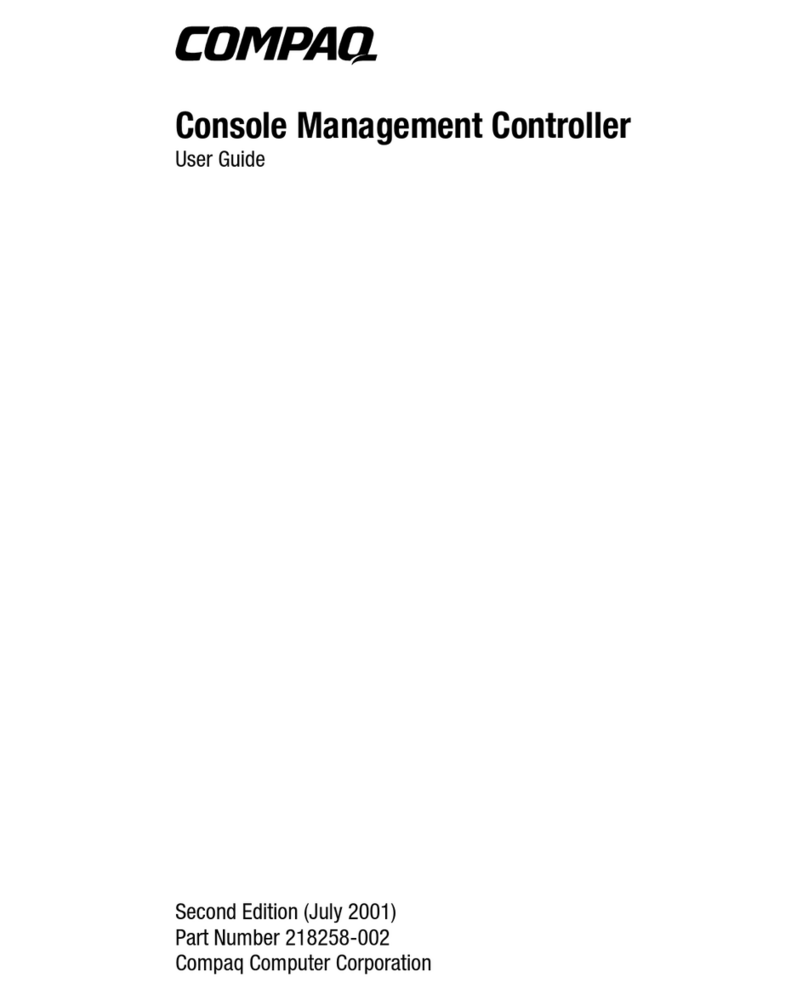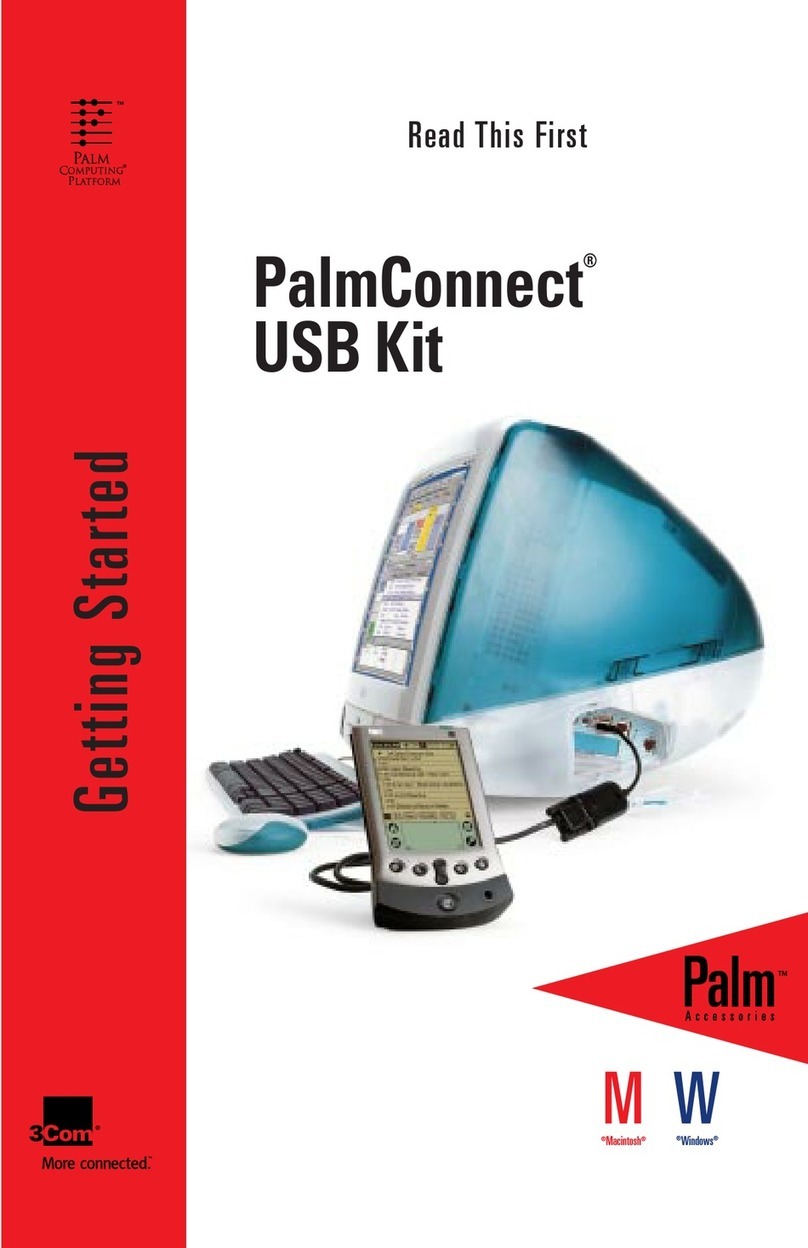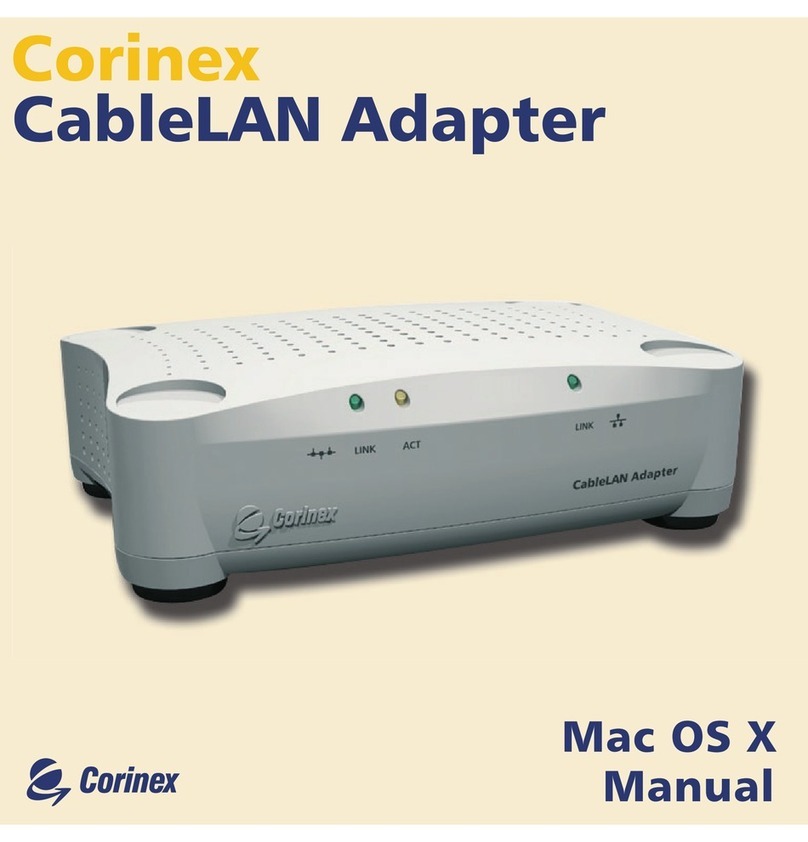TrafSys MIU1500 User manual

MIU-1500 / CompuCount User’s Guide Page 1
User’s
Guide
MIU1500 / CompuCount
Wireless
Data Manager

MIU-1500 / CompuCount User’s Guide Page 2
Contents
Introduction/Overview...........................................................................................................................................3
Models ..................................................................................................................................................................3
Requirements.........................................................................................................................................................3
Getting Started.......................................................................................................................................................4
Hardware Setup.....................................................................................................................................................4
Changing Your PC’s Default IP Address................................................................................................................5
Changing the Manager’s Default IP Address..........................................................................................................6
Changing the MIU’s Name....................................................................................................................................7
Adding Sensors......................................................................................................................................................7
Viewing Counts.....................................................................................................................................................8
MIU Setup Options................................................................................................................................................9
The Status Screen ..................................................................................................................................................9
Sensor Setup........................................................................................................................................................10
The MIU Setup Screen ........................................................................................................................................10
The Communications Setup Screen......................................................................................................................11
Set Count Manager’s Clock .................................................................................................................................11
Passwords............................................................................................................................................................12
Reset Options ......................................................................................................................................................13
Export Options.....................................................................................................................................................14
Alternate Format..................................................................................................................................................17
Status of Sensors..................................................................................................................................................18
FTP Scripts..........................................................................................................................................................19
Common Software Tools .....................................................................................................................................20
Appendix.............................................................................................................................................................20
Specifications ......................................................................................................................................................21
Resetting the MIU-1500 to Factory Defaults........................................................................................................22
Glossary of Terms................................................................................................................................................23

MIU-1500 / CompuCount User’s Guide Page 3
Introduction/Overview
The
new
MIU-1500
is
available
with
either
an
internal
418
Mhz
receiver
for
smaller
areas
or
an
internal
900
Mhz
receiver
which
will
allow
for
greater
distances.
Additionally,
the
all
new
MIU-1500
unit
also
includes
an
external
RS232
serial
port
to
add
an
optional
external
receiver.
The
MIU-1500
Count
Manager
is
designed
to
collect
data
from
wireless
counter
sensors
and
display
that data
through
reports
that
can
be
viewed
with
an
ordinary
Web
browser
application.
The
MIU-1500
gives
reports
of
counts
by
half
hour,
hour,
day,
week
and
month.
The
MIU-1500
also makes
this
same
data
available
as
text
files
downloadable
using
an
FTP
client
program.
The
MIU-1500
can
manage
up
to
16
sensors.
It
can
hold
data
for
those
16
sensors
for
3
months
at
30
minute
intervals,
and
for
1.5
years
at
day
intervals.
Models
The
new
MIU-1500
is
designed
to
work
in
conjunction
with
the
following
Traf-Sys
Wireless
counters:
Traf-Sys Directional Beam Sensors
Traf-Sys Single Beam Sensors
Traf-Sys Pulse Transmitters, used with Surround Sensor Sensors and Thermal Cameras
Requirements
•
The
MIU-1500
with
at
least
one
counting sensor.
•
A
computer
with
an
Ethernet
card
or
network
connection
for
TCP/IP
communications.
•
A
Web
browser
application,
such
as
Internet
Explorer.

MIU-1500 / CompuCount User’s Guide Page 4
Getting Started
Hardware Setup
Power & Activity
Ethernet Port
Power Connection
Local Serial Port
Ethernet Link
Receiver Port
Apply Power
Plug
the
power
supply
into
the
MIU-1500
and
make
sure
it
is
connected
to
a
working
outlet.
The
red
power light
will
come
on
when
the
MIU
is
plugged
in.
The
red
light
indicates
that
the
MIU-1500
is
functioning.
The
MIU-1500
also
uses
the
red
light
to indicate
reception
of
a
packet
from
a
transmitter.
The
MIU-1500
will
blink
the
red
light
momentarily indicating
a
packet
has
been
received
and
processed.
Connecting to PC
A
crossover
cable
is
included
with
the
MIU-1500
setup.
Plug
the
crossover
cable
into
the
Ethernet
port
on the
back
of
your
computer
and
plug
the
other
end
into
the
Ethernet
port
on
the
MIU-1500.
The
Ethernet Link
light
(green
light)
will
turn
on
indicating
a
valid
Ethernet
physical
connection.
Connecting to LAN
Alternatively
you
can
connect
the
Manager
to
your
Local
Area
Network.
Your
network
administrator
can
help
you
decide
which
IP
address
to
assign
to
the
Manager.
Testing the Connection
To
check
to
see
if
you
have
made
a
connection,
open
your
browser
and
type
in
http://192.168.1.55.
The
browser
should
display
the
MIU-1500 count
screen.
The
screen
will
not
show
sensors
until
they
are
configured.

MIU-1500 / CompuCount User’s Guide Page 5
Changing Your PC’s Default IP Address
If
you
have
been
unable
to
see
the
Manager's
web
page
when
connecting
directly
to
your
PC,
you
may
need
to
make
changes
to
your
computer's
IP
configuration.
First,
connect
the
MIU
directly
to
the
Ethernet
port
on
the
back
of
your
computer.
Next,
change
the
IP
settings
on
your
computer.
WINDOWS
95/98/ME/2000
To
change
the
IP
settings
on
a
computer
running
the
Windows
95/98/ME/2000,
select
the
following:
„Control
Panel
->
Network
->
TCP/IP‟;
select
the
TCP/IP
service
for
your
network
card;
choose
„Properties->IP
Address‟;
choose
„Specify
an
IP
Address‟
(example:
192.168.1.40
255.255.255.0);
and
fill
in
the
initial
values
for
IP
address
and
subnet
mask.
With
Windows
98
and
ME
you
will
need
to
restart
the
PC.
WINDOWS
XP
WIN 95/98/ME/2000
To
change
the
IP
settings
on
a
computer
running
Windows
XP,
select
the
following:
„Control
Panel
(if
not
already
presented,
you
will
find
it
easier
to
„Switch
to
Classic
View‟)
->
Network
Connections.
Right-click
on
Local
Area
Connection
(or
Network
Bridge
if
installed)
and
select
Properties.
Highlight
„Internet
Protocol
(TCP/IP)‟
and
click
the
Properties
button.
Select
„Use
the
following
IP
address‟
(example:
192.168.1.40
255.255.255.0)
and
fill
in
the
initial
values
for
IP
address
and
subnet
mask.
WIN 95/98/ME/2000
WIN XP WIN XP
Run
WINIPCFG
or
IPCONFIG
to
verify
changes.
When
finished
changing
the
IP
address
and
connecting
the
computer
to
the
MIU-1500,
use
the
Ping
utility
on
your computer
(see
the
following
section)
and
ping
the
MIU-1500 to
verify
your
settings
and
connection.
A
successful
ping
will receive
a
reply.

MIU-1500 / CompuCount User’s Guide Page 6
Changing the Manager’s Default IP Address
In
order
for
the
MIU-1500
to
communicate
TCP/IP,
it
needs
an
IP
address,
network
mask,
and
possibly
a
gateway
address.
If
you
are
connecting
the
Manager
to
your
LAN,
you
should
change
the
MIU-1500‟s defaults
(IP
address
192.168.1.55;
network
mask
255.255.255.0;
no
gateway
address
and
port
1000).
To
change
the
IP
address
on
the
MIU-1500
go
to
the
"Setup"
link
and
then
click
on
"Communications." There
you
can
enter
a
new
IP
address
for
the
MIU-1500.
Before
you
change
the
IP
address
you
should
ping
the
new
IP
address
to
make
sure
that
no
computers
on
your
network
have
the
IP
address
already.
To
ping,
go
to
the
PC's
"Start"
menu,
choose
"Run"
and
in
the
"Open:"
box
type
"Command."
An
MS-DOS
window
will
appear.
Type
"Ping"
and
the
IP
address
you
are
trying
to
ping.
If
you
want
to
change
your
Manager's
IP
address
to,
say,
192.168.1.213
you
would
type
"Ping
192.168.1.213"
and
wait
for
a
response.
If
the
result
of
the
ping
is
"Request
timed
out"
then
there
is
no
other
device
on
that
IP
address
and
you
can
safely change
the
IP
address
of
the
MIU-1500.
Once
you
know
the
IP
address
you
want,
enter
it
into
the
"IP
Address"
box
on
the
Communications
Setup
screen.
Enter
the
subnet
mask
also.
You
may
need
to
ask
your
network
administrator
for
a
subnet
mask.
When
you
are
ready,
click
the
"Submit"
button
at
the
bottom
of
the
page.
The
program
will
attempt
to
change
the
IP
Address
of
the
MIU-1500.
If
successful,
the
browser
will
redirect
to
the
new
IP
address
and
at
the
bottom
of
the
screen,
in
green
letters,
it
will
say,
"Submission
accepted.
Parameters
updated!"
Click
on
the
link
"Setup
Menu"
at
the
bottom
of
the
page
to
return
to
the
Setup
menu.

MIU-1500 / CompuCount User’s Guide Page 7
Changing the MIU’s Name
Click
on
the
"Manager"
link
of
the
setup
menu.
From
this
page
you
can
enter
a
name
for
the
MIU-1500
Count Manager.
You
can
set
the
maximum
amount
of
time
that
may
pass
between sensor
transmissions
before
the
sensor
is
declared
offline.
You
may
set
the
"Auto
Add"
mode
for
the
MIU-1500.
The
default
"Auto
Add"
mode
is
"Service
Mode."
"Service
Mode"
means
the
MIU-1500
will
only
add
sensors
to
its
list
if
it
receives
a
sensor
packet
that
has
been
sent
by
pressing
the
Smart
Switch
on
the
receiver
(Traf-Sys
Wireless Beams
)
or
holding
the
magnetic
wand at
top
right
facing
corner
of
the
unit
(Pulse Transmitter).
"All"
means
that
the
MIU-1500
will
add
a
new
sensor
any
time
it
receives
a
transmission
from
a
sensor
that
is
not
already
in
its
list.
"Off"
means
that
the
MIU-1500
will
never
add
new
sensors
to
its sensor
table.
Adding Sensors
The
MIU-1500
Count
Manager
by
default
adds
sensors
to
its
configuration
list
when
it
receives
a
packet
that has
been
transmitted
in
"Service
Mode."
You
can
send
a
transmission
in
service
mode
by
pressing
the
Smart Switch
on
the
receiver
(the
unit
with
the
LCD
display
-
you
will
need
to
press
this
switch
twice
within
20
seconds)
of
the
counter
sensor
(Traf-Sys
Wireless Beams
)
or
holding
the
magnetic
wand
at
top
right
facing
corner
of the
unit
(Pulse Transmitter).
CAUTION:
If
you
are
adding
a
MIU-1500
to
an
existing
counter
setup,
this
will
erase
all
counts.
The
MIU-1500
will
add
counters
to
its
configuration
and
you
may
view
their
data
from
the
main
browser screen.
You
may
need
to
refresh
the
screen
a
couple
of
times
before
the
counter
shows
up.
Once
you
are
finished
adding
counters,
return
to
the
Manager‟s
Setup
screen
and
turn
the
„Automatically
add
sensors‟
selection
to
“Off.”

MIU-1500 / CompuCount User’s Guide Page 8
Viewing Counts
To
view
the
current
sensors
and
their
data,
start
your
browser
and
enter
the
Manager's
IP
address
in
the
"Address:"
box.
The
user
can
view
the
count
total
at
different
time
granularities.
The
user
can
view
counts
summed
per
Half
Hour,
per
Hour,
per
Day,
per
Week,
or
Per
Month.
Clicking
on
the
links
at
the
top
of
the
screen
will
change
the
time
granularity.
The
user
can
also
navigate
through
count
history
by
using
the
"Prev"
and
"Next"
buttons
at
the
bottom
of
the
screen.
Clicking
the
"Now"
button
will
take
you
to
the
current
date
and
time.
If
counts
have
been
recorded
for
the
current
view,
they
will
be
displayed.
Otherwise
(for example,
if
the
requested
view
is
in
the future,
or
a
time
earlier
than
the
first sensor
transmission)
the
cell
for
that
time period
will
display
"n.a."
(for
"not applicable").
Each
configured
sensor
has
a
row
in
the
table.
Directional
counters
show
counts
on
two
lines
for
Count
A
and
Count
B.
The
total
of
all
counts
for
all
sensors
for
that
time
period
will
be
displayed
on
the
bottom
row
of
the
table
and
the
right
hand
column.
For
all
time
intervals
greater
than
Half
Hour,
the
top
row
of
the
table
contains
links
to
focus
in
on
a
smaller
time
interval.
For
example
from
the
"Per
Month"
view
you
can
click
on
a
specific
month,
like
January,
in
order
to
see
the
weekly
breakdown
of
counts
for
January.
To
get
the
latest
data,
click
the
"Now"
button
or
click
the
"Refresh"
button
on
the
browser.
The
date
and
time
on
the
display
show
the
time
the
report
was
generated.
You
can
make
the
table
appear
smaller
if
you
want
it
to
fit
on
the
screen
better
by
(in
Internet
Explorer)
going
to:
View
|
Text
Size
|
Smaller.

MIU-1500 / CompuCount User’s Guide Page 9
Error
Message
Description
Offline
The
MIU h
asn't
received
a
transmission
from
this
sensor
within
the
timeout
interval,
which
is
set in
the
"Manager
Setup"
screen
under
"Sensor Offline
Time."
Beam
Blocked
The
sensor
beam
seems
to
be
blocked
by
some
obstruction.
Check
Battery
The
battery
voltage
is
low
or
the
battery
is
not
present.
No
Line
Power
Line
power
has
been
removed
or
is
too
low.
MIU Setup Options
The Status Screen
The
status
screen
shows
detailed
information
about
the
sensors
currently
being
monitored.
To
view
the
status
screen
click
on
the
"Status"
link
from
the
main
screen.
The
status
table
shows,
for
each
sensor,
the
identifying
label
name
of
the
sensor
("Sensor")
,
the
serial
number
of
the
sensor
("ID"),
the
number
of
seconds
elapsed
since
the
last
transmission
("Age"),
whether
the
last
transmission
was
sent
in
service
mode
or
not
("Srv"),
and
the
data
value
of
the
last
reading
("Last
Reading").
The
last
reading
is
the
accumulated
count
of
the
sensor
since
the
sensor
started
or
since
the
last
reset.
If
the
transmission
was
sent
in
service
mode,
there
will
be
an
"X"
in
the
"Srv"
column.
When
the
MIU-1500
receives
a
transmission
from
a
new
sensor
it
assigns
it
a
default
label
which
is
the sensor
position
plus
the
sensor
type
("1Count").
You
can
change
the
label
assigned
to
the
sensor
by
clicking
on the
label
name
in
the
"Sensor"
column.
The
status
table
will
highlight
in
yellow
a
row
in
the
table
if
the
sensor
is
in
an
error
state.
The
browser
will
show
an
error
message
when
the
mouse
pointer
is
moved
over
top
of
the
graphic
symbol.
The
following
table
shows
the
possible
error
states:

MIU-1500 / CompuCount User’s Guide Page 10
Sensor Setup
Reverse
A
and
B
MIU-1500
presents
the
"Reverse
A
and
B"
checkbox
if
the
counter
is
a
Directional
Counter.
If
checked,
the
MIU-1500 will
switch
the
"A"
and
"B"
counts
of
the
Directional
Counter
allowing
the
user
to
assign
A
and
B
to
incoming
and
outgoing
traffic
as
desired.
Changing
the
Sensor's
Name
Type
a
new
name
in
the
"Sensor
Name"
box.
Deleting
a
Sensor
The
very
last
sensor
in
the
table
on
the
status
screen
can
be
deleted.
Click
the
"Delete
Sensor"
box
and
hit
the
"Submit"
button.
Replacing
a
Sensor
If
you
want
to
swap
out
a
sensor
but
keep
the
new
sensor
in
the
same
position
as
the
old
one,
simply
go
to
the
sensor
setup
screen
for
the
sensor
you
want
to
replace
and
type
in
the
new
sensor's
serial
number
in
the
"Serial
No."
box.
Hit
the
"Submit"
button
and
the
MIU-1500
will
update
its
configuration
with
the
new sensor
information.
As
always,
enter
the
serial
number
with
care!
The MIU Setup Screen
The
setup
screen
allows
you
to
set
some
parameters
for
the MIU-
1500.
You
can
change
the
name
of
the
MIU-1500. Note:
the
Manager
Name
is
also
used
as
the
Login
User
Name
when passwords
have
been
set
up.
"Sensor
Offline
Time"
allows
you
can
set
the
amount
of
time
that
can
elapse
between
transmissions
from
one
sensor
before
the
sensor
is
declared
offline.
You
can
set
the
"Auto
Add"
mode
on
the
Manager.
The
"Auto
Add"
mode
tells
the
Manager
what
to
do
when
it
receives
a
transmission
from
a
sensor
that
is
not
already
in
the
Manager's
sensor
table.
If
"Auto
Add"
is
"Off"
then
the
Manager
will
ignore
all
transmissions
from
sensors
that
are
not
in
the
table
already.
If
"Auto
Add"
is
"All",
the
Manager
will
add
a
new
sensor
to
the
sensor
table
each
time
it
receives
a
transmission
from
a
new
sensor.
If
"Auto
Add"
is
"Service
Mode"
then
the
Manager
will
only
add
a
new
sensor
to
the
table
if
the
transmission
is
received
in
service
mode.
When
you
are
ready
to
make
changes,
press
the
"Submit"
button.
Click
the
"Home"
link
to
see
the
table
of
counts
and
click
the
"Setup
Menu"
to
go
back
to
the
setup
menu.

MIU-1500 / CompuCount User’s Guide Page 11
The Communications Setup Screen
The
communications
setup
screen
allows
you
to
change
the MIU-1500's
IP
address,
subnet
mask,
and
gateway.
Enter
these parameters
as
necessary
and
click
"Submit."
The
new
parameters
are sent
to
the
MIU-
1500
and
an
intermediate
screen
displays.
If
the
IP
address
is
changed
successfully,
the
browser
will
redirect
itself to
the
new
IP
address
and
there
will
be
a
message
on
the
screen
saying,
"Submission
accepted!
Parameters
updated."
If
the
change
of
IP
address
was
not
successful,
you
will
see
a
browser
error
page
telling
you
that
the
file
cannot
be
found.
If
you
check
the
box
that
says,
"Revert
back
to
previous
settings
if
no
connection
in
5
minutes"
then
the
program
will
try
to
update
the
Manager's
IP
address.
If
it
cannot
make
a
connection
within
5
minutes
thereafter,
it
will
reset
the
IP
address
to
the
previous
settings.
Set Count Manager’s Clock
You
will
need
to
make
sure
the
Manager's
clock
is
set
correctly
so
that
it
can
display
the
counts
and
totals
correctly.
Choose
"Set
Clock"
from
the
Setup
menu,
enter
the
correct
values,
and
click
"Submit"
to
set
the
MIU-1500's
clock.
If
you
set
the
clock
back
more
than
30
minutes
the
Manager
will
require
you
to
reset
the
counts
before
updating
the
clock.
If
you
set
the
clock
ahead
more
than
30
minutes
the
Manager
will
pad
the
log
with
zeroes
(0)
for
the
counts
for
those
times.

MIU-1500 / CompuCount User’s Guide Page 12
Passwords
Count
Manager
controls
access
to
the
different
resources
of
the MIU-
1500
through
passwords.
There
are
two
levels
of
Login access
for
the
MIU-1500:
Report
and
Setup.
Through
the Report
Login,
the
MIU-1500
allows
access
to
the
data
portions of
the
MIU-1500
like
the
HTML
reports
and
FTP
download files.
Through
the
Setup
Login,
the
user
can
make
changes
to
the MIU-1500
setup.
With
the
Setup
Login,
the
user
has
all
the rights
of
the
Report
Login
as
well.
If
the
Login
password
has
been configured
and
the
user
has
not
logged
in
yet,
the
MIU-1500 will
respond
with
an
error
message
to
commands.
If
you
set
up
a
password
to
restrict
viewing
("Report
Password")
then
changing
the
setup
will
be
restricted
also.
If
you
set
up
a
password
for
setup
("Setup
Password")
without
setting
the
“Report
Password”
then
viewing
of
reports
is
not
restricted.
When
you
enter
a
password,
the
characters
will
be
masked
with
asterisks.
You
type
"cat"
and
the
box
will
show
"***".
It
is
very
important
that
you
remember
your
password.
Click
"Submit"
to
establish
password
protection
in
the
MIU-1500.
After
passwords
are
established,
you
will
encounter
a
screen
requesting
a
password
when
attempting
to
perform
an
action
that
is
password
protected.
The
screen
will
ask
for a
user
name.
For
access
to
the
reports
(HTML
and
FTP)
the
user
name
is
“Report”.
For
access
to
the
setup,
the
user
name
is
the
name
of
the
MIU-1500.
Note:
For
FTP,
if
a
Report
password
is
set,
use
the
Report
password
and
'FTP'
as
the
User
Name
and
use
an
FTP
client
program
to
collect
the
data,
otherwise
use
"anonymous"
to
login.
WARNING:
User
Name
and
Password
are
case
sensitive. Do not use special characters like spaces
in the password. Please use caution when entering
a new password. If you forget your password, you
WILL need to clear the memory on the unit.

MIU-1500 / CompuCount User’s Guide Page 13
Reset Options
Be
careful
when
you
reset
values.
There
is
no
way
to
undo
these
changes.
On
the
reset
screen
you
may
select
to
reset
the
sensor
counts
to
zero
("Reset
Counts"),
delete
all
the
sensors
from
MIU-1500's
setup
table
("Delete
All
Sensors")
or
reset
the
People
MIU-1500
to
factory
settings
("Reset
People
MIU-1500").
Resetting
the
MIU-1500
to
factory
settings
will
reset
the
IP
address
back
to
the
default
192.168.1.55.
The browser
will
not
redirect
itself
and
you
will
need
to
re-enter
the
IP
address
into
the
"Address"
bar.

MIU-1500 / CompuCount User’s Guide Page 14
Export Options
Viewing
From
the
main
screen
click
on
the
"Export"
link.
You
will
be
brought
to
the
reports
section.
From
here
you
can
view
and
save
data
in
text
format.
You
may
also
right-click
with
your
mouse
on
the
link.
A
menu
will
pop
up.
If
you
choose
"Save
Target
As…"
you
can
use
the
resulting
Save
dialog
box
to
save
the
counts
report
to
a
text
file
on
your
computer.
You
can
view
these
files
with
any
text
editor.
You
also
view
a
directory
of
the
available
files
using
the
Manager‟s
IP
address
in
the
URL.
Example:
ftp://192.168.1.55
There
are
two
file
formats.
The
Standard
Format
is
more
compact
and
provides
counts
for
all
sensors
for
the
period
on
each
line.
The
Alternate
Format
provides
a
count
per
line,
per
sensor
,
per
period.
The
files
have
a
title
based
on
the
time
span
of
the
report
plus
a
timestamp.
An
example
title
is
this:
"CNT24-012003103434.txt”
This
is
the
count
file
for
the
last
24
hours
and
the
report
was
generated
on
01/20/03
at
10:34:34
a.m.
The
following
is
table
of
the
available
files:
Web Page Title File Name Short File Name
Standard Format
Counts for the last full day until the
present time (counter per 30 minutes)
Counts for the last 7 full days until the
present time (counter per 30 minutes)
Counts for the last 31 full days until
the present time (counter per 30
minutes)
All Counts for the day Log (counts per
day)
Alternate Format
Counts for the last full day until the
present time (counter per 30 minutes)
Counts for the last 7 full days until the
present time (counter per 30 minutes)
Counts for the last 31 full days until
the present time (counter per 30
minutes)
All Counts for the day Log (counts per
day)
Status
CNTDAY-timestamp.txt CNTDAY.txt
CNT7DAYS-timestamp.txt CNT7DAYS.txt
CNT31DAYS-timestamp.txt CNT31DAYS.txt
CNTPERALL-timestamp.txt CNTPERALL.txt
REC24-timestamp.txt REC24.txt
REC7-timestamp.txt REC7.txt
REC31-timestamp.txt REC31.txt
RECPERALL-timestamp.txt RECPERALL.txt
Status of sensors STATUS-timestamp.txt STATUS.txt
The
short
file
name
can
be
used
to
get
the
most
current
file.
If
no
Report
Password
is
set,
you
can
use
an
FTP
client
program
or
Windows
Internet
Explorer
to
obtain
the
data.
Use
“anonymous”
for
the
user
name.
If
the
Report
Password
has
been
set,
you
will
need
to
use
an
FTP
client
program
to
download
the
reports.
You
will
not
be
able
to
use
Windows
Internet
Explorer
to
obtain
this
data.
There
is
an
interaction
problem
between
the
MIU-1500
and
Windows
Internet
Explorer
using
FTP
when
passwords
are
set.
The
user name
is
the
name
of
the
Manager
and
the
password
is
the
report
level
password.

MIU-1500 / CompuCount User’s Guide Page 15
Viewing
-
continued
Standard Format
There
are
eight
different
kinds
of
record
types.
Each
record
starts
with
a
number
that
tells
what
kind
of
record
it
is.
Manager
Counter
Information
0,
date,
time,
Manager
name,
mac,
number
of
sensors,
setup
timestamp,
report
start,
report
finish
Where:
date
–
date
that
the
report
was
generated.
time
–
time
that
the
report
was
generated.
Manager
name
–
name
of
the
MIU-1500.
mac
–
MAC
address
of
the
Manager.
number
of
sensors
–
the
number
of
sensors
currently
being
monitored.
setup
timestamp
–
the
time
stamp
of
the
last
setup
change.
report
start
–
the
time
and
date
of
when
the
report
starts.
report
finish
–
the
time
and
date
of
when
the
report
finishes.
Sample
record:
0,01/20/03,14:36:02,Sample
PC,00:90:C2:C1:0F:D9,2,01/20/03
13:10:17,01/17/03
00:00:00,01/20/03
14:36:01
Sensor
Names
1,
date,
time,
sensor
name1,…sensor
namen
date
–
date
that
the
report
was
generated.
time
–
time
that
the
report
was
generated.
sensor
name
–
name
of
the
sensor
n
–
number
of
sensors
Sample
record:
1,01/20/03,14:36:02,Main,Warehouse1
Sensor
Serial
Numbers
2,
date,
time,
serial
number1,…serial
numbern
date
–
date
that
the
report
was
generated.
time
–
time
that
the
report
was
generated.
serial
number
–
serial
number
of
the
sensor.
n
–
number
of
sensors
Sample
record:
2,01/20/03,14:36:02,0000000000608220,000000001C110321

MIU-1500 / CompuCount User’s Guide Page 16
Viewing
-
continued
Sensor
Types
*3,
date,
time,
sensor
type1,
…sensor
typen
date
–
date
that
the
report
was
generated.
time
–
time
that
the
report
was
generated.
sensor
type
–
type
of
sensor:
1
–
Traf-Sys
Peoplecounter;
2
–
Mighty-Might
or
Directional
Counter
n
–
number
of
sensors
Sensor
Period
A
Counts
7,
date,
time,
countA1,
…countAn
date
–
date
of
the
period.
time
–
time
of
the
period.
countA
–
count
for
the
period
for
the
first
set
of
counts
for
the
sensor.
The
period
is
either
30
minutes
or
1
day
n
–
number
of
sensors
Sample
record:
7,01/17/03,00:00:00,127,115
Sensor
Current
Interval
A
Counts
8,
date,
time,
countA1,
…countAn
date
–
date
of
the
current
interval..
This
is
a
partial
total
for
the
interval,
as
the
current
interval
has
not
been
completed
yet.
time
–
time
of
the
current
interval..
This
is
a
partial
total
for
the
interval,
as
the
current
interval
has
not
been
completed
yet.
countA
–
count
for
the
current
interval
for
the
first
set
of
counts
for
the
sensor.
n
–
number
of
sensors
Sample
record:
8,01/20/03,00:00:00,176,147,142,1,3,353
Sensor
Period
B
Counts
*9,
date,
time,
countB1,
…countBn
date
–
date
of
the
period.
time
–
time
of
the
period.
countB
–
count
for
the
period
for
the
second
set
of
counts
for
the
sensor..
The
period
is
either
30
minutes
or
1
day
n
–
number
of
sensors

MIU-1500 / CompuCount User’s Guide Page 17
Viewing
-
continued
Sensor
Current
Interval
B
Counts
*10,
date,
time,
countB1,
…countBn
date
–
date
of
the
current
interval..
This
is
a
partial
total
for
the
interval,
as
the
current
interval
has
not
been
completed
yet.
time
–
time
of
the
current
interval..
This
is
a
partial
total
for
the
interval,
as
the
current
interval
has
not
been
completed
yet.
countB
–
count
for
the
current
interval
for
the
second
set
of
counts
for
the
sensor.
n
–
number
of
sensors
*
These
records
are
only
included
if
a
Directional
Counter
is
in
the
sensor
list.
Alternate Format
Header
Record
The
first
record
of
every
file
is
a
header
that
has
titles
for
every
column.
The
following
is
an
example:
"Type","Manager
Name","MAC","Sensor
Name","Serial
No","Sensor
Type","Start
Time","End
Time","Count
A","Count
B"
Data
Record
Type
–
type
of
record:
1
–
record
contains
counts
for
the
full
period;
5
–
record
contains
counts
for a
partial
period
(
the
current
period
which
is
incomplete).
Sever
Name
–
name
given
to
the
Manager
MAC
–
serial
number
of
the
Manager
(the
ethernet
MAC
address)
Sensor
Name
–
name
given
to
the
sensor
Serial
No
–
16
character
serial
number
of
the
sensor
Sensor
Type
–
1
–
Traf-Sys
Peoplecounter;
2
–
Mighty-Might
or
Directional
Counter
Start
Time
–
starting
date
and
time
of
the
period
End
Time
–
ending
date
and
time
of
the
period.
For
record
type
5
this
time
will
be
less
than
the
full
period.
Count
A
–
count
for
the
period
Count
B
–
count
for
the
period.
Will
always
be
0
for
Sensor
Type
1.

MIU-1500 / CompuCount User’s Guide Page 18
Viewing
-
continued
Status of Sensors
Header
Record
The
first
record
of
the
file
is
a
header
that
has
titles
for
every
column.
The
following
is
an
example:
"Manager
Name","MAC","Sensor
Name","Serial
No","Sensor
Type","Time","Age","State",”Count
A”,"Count
B"
Data
Record
Manager
Name
–
name
given
to
the
MIU-1500
MAC
–
serial
number
of
the
Manager
(the
ethernet
MAC
address)
Sensor
Name
–
name
given
to
the
sensor
Serial
No
–
16
character
serial
number
of
the
sensor
Sensor
Type
–
1
–
Traf-Sys
People counter;
2
–Directional
Counter
Time
–
time
when
the
report
was
generated.
Count
A
–
accumulated
count
since
the
counter
started
or
was
reset
Count
B
–
accumulated
count
since
the
counter
started
or
was
reset.
Will
always
be
0
for
Sensor
Type
1.
Standard Format
Alternate Format

MIU-1500 / CompuCount User’s Guide Page 19
FTP Scripts
You may need to create scripts in Windows to automatically download files from the MIU-1500. The following
is an example of an ftp script and batch file that you can use for this purpose:
You will need two files to automatically download from the MIU-1500. The first is a batch file and the second is
an ftp script file that will be run by the batch file.
Batch File
ftp –s:download30MinFile.scr 192.168.1.55
The example below shows the command you would use to create a batch file. This command will run a ftp
script file named
download30MinFile.scr
and connect to a MIU-1500 device at 192.168.1.55. Create a new
text file with the contents below and save it as download.bat
FTP Script File
The example below shows the commands you would use to create a ftp script file. This script will login to the
ftp interface of the MIU-1500 and download the RECPERALL.txt file to the current directory. Make sure you
specify the ftp user name and password in the script to connect successfully. To use this with the batch file,
make sure you name the file
download30MinFile.scr.
ftpUser
ftpPassword
get RECPERALL.txt
bye
Running the Batch
You should now have two files, download.bat and download30MinFile.scr. In windows, run the download.bat
file. This will connect to the MIU-1500 and run the ftp script which will download the RECPERALL.txt file. If you
need to schedule this batch, you can do so using Windows Task Scheduler.

MIU-1500 / CompuCount User’s Guide Page 20
Appendix
Common Software Tools
The
interface
to
the
MIU-1500
was
designed
to
meet
common
standards
and
be
easy
to
use.
You
can
use
common
software
that
either
comes
with
your
operating
system
or
can
be
purchased
to
diagnose
common
problems
and
to
communicate
with
the
MIU-1500.
The
primary
means
of
obtaining
the
MIU-1500
reports
is
use
a
Web
Browser
and
you
download
report
files using
an
FTP
client.
The
MIU-1500
has
a
command
/
response
protocol
that
can
be
used
with
serial,
radio
and
TCP/IP
medias. For
TCP/IP
you
send
simple
text
commands
via
port
1000
(default)
and
receive
responses.
The
commands
are used
to
set
up
the
MIU-1500
and
to
diagnose
problems.
You
can
use
a
communication
program
that
has terminal
emulation
to
get
familiar
with
the
MIU-1500
commands
and
communications.
Once
you
are familiar
with
the
commands,
you
can
automate
the
communications
using
common
development
programming languages.
Here
are
some
examples
of
common
software:
Microsoft
Windows
Internet
Explorer
–
used
to
view
the
reports
and
set
up
the
MIU-1500
FTP
–
command
line
utility
that
allows
you
download
the
report
files
Third
party
FTP
Clients
–
commercial
and
shareware
FTP
client
programs
used
to
download
the
report
files
Ping
–
simple
program
to
test
the
TCP/IP
connection.
Telnet
–
simple
program
to
send
commands
and
see
responses
via
TCP/IP.
Note:
MIU-1500
uses port
1000
as
default.
Winipcfg
–
utility
that
shows
the
computer‟s
IP
address.
Ipconfig
–
utility
that
shows
the
computer‟s
IP
address
(DOS
program).
HyperTerminal
–
provides
terminal
emulation
program
to
communicate
via
TCP/IP,
and
serial
port.
Note:
HyperTerminal
can
answer
calls
via
TCP/IP
but
does
not
work
very
well
with
the
MIU-1500
in
this mode
because
HyperTerminal
echoes
characters
it
receives.
Procomm
–
third
party
program
from
Symantec
–
provides
terminal
emulation
to
communicate
via
TCP/IP
and
serial
port.
Other
Operating
Systems
Web
Browser
–
used
to
view
the
reports
and
set
up
the
MIU-1500
FTP
–
command
line
utility
that
allows
you
download
the
report
files
Third
party
FTP
Clients
–
commercial
and
shareware
FTP
client
programs
used
to
download
the
report
files
Ping
–
simple
program
to
test
the
TCP/IP
connection.
Telnet
–
simple
program
to
send
commands
and
see
responses
via
TCP/IP.
Note:
MIU-1500
uses port
1000
as
default.
Table of contents

